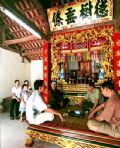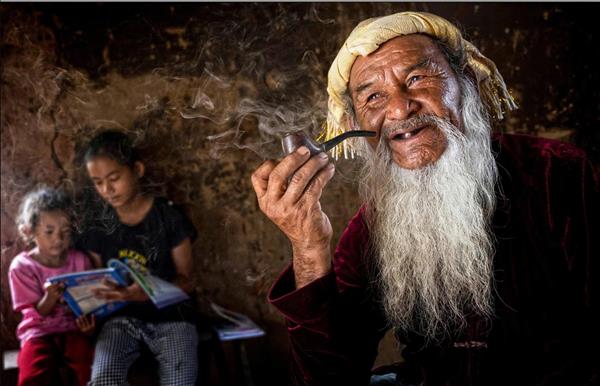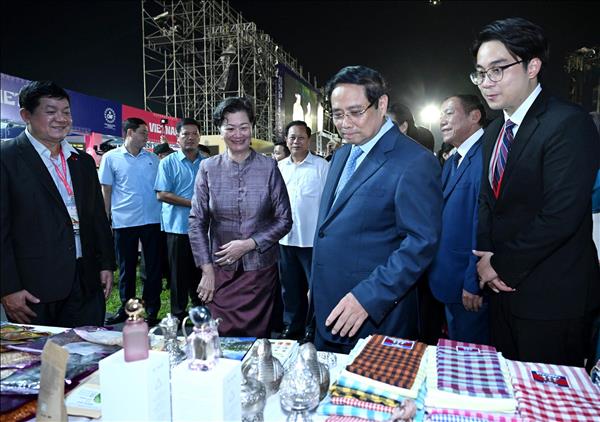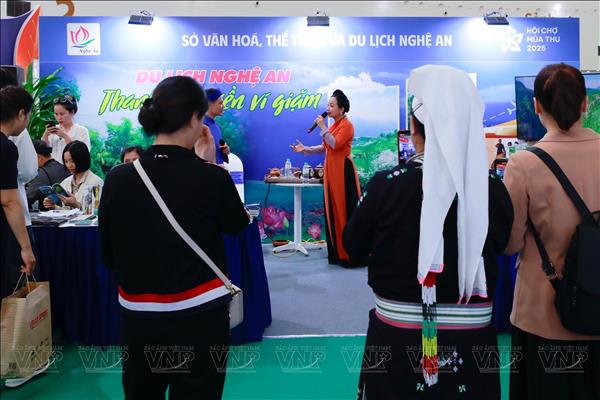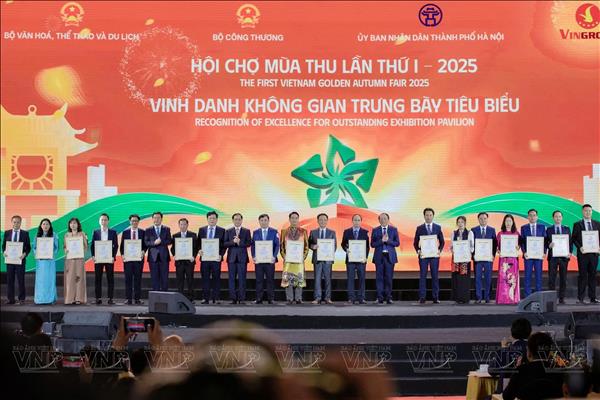|
|
A young couple and their children living in an apartment with modern furniture is a model that Vietnamese young urban families are striving for. However, traditional families with three or four generations living under the same roof still remain. The difference between these two types of families is only in terms of the living space, because relationship among the family members - grandparents, parents, children, and grandchildren - is still kept intact, close and affectionate. This is a fine long-standing cultural tradition that built up the traits of the Vietnamese family and nation.
In Do Thi Hoan's family there are members of three generations living in the same house in the suburban My Dinh Village, Tu Liem District of Hanoi. At the age of 82, she is still healthy. Hoan has four children, of whom two sons are now living with her on the land handed down from her forefathers. Her sons each built a house of their own, but their houses share the same gate and the two yards stand next to each other. Not far from their homes is the ancient house of more than 100 years old, where they worship their ancestors and hold family meetings.
Hoan lives with her eldest son's family - Nguyen Van Quang, his wife - Ta Thi Van and their three children. The practice that the parents live with the eldest son's family is a Vietnamese tradition. Hoan's husband died 25 years ago. Although living in the house of her eldest son, Hoan is also close to the other sons' families. This brings great joy to her because she can enjoy life with her children and grandchildren, seeing all her children growing up, her grandchildren so nice, good in study and well-behaved. Besides enjoying her family happy life Hoan has another pleasure, i.e going to the pagoda with her old village friends.
In 1979 when her husband died she had to take care of her children and do the farm work on a 360 - sq.m plot of land. Not long after that, the eldest son, Quang, returned home from military services and he helped his mother in taking care of his brothers and sisters. Quang learnt from his mother a tender love for people and from his father, a strong will and a pride of a family with many members doing the village's work. In his house, there is a board with the words "kind heart" hanging on the wall. "I respect these words, for people will surpass all difficulties if they are kind-hearted," Quang said. Years ago, when their life was hard Quang and his brothers had to produce bricks and bake them by themselves to build their house. Almost all family affairs, big or small, are taken care of by the eldest brother, so the younger ones always respect him. In their ancient house, there is a screen with the words "Duc tru van trung", literally "a family living in harmony and peace for generations." Quang and his big family have for generations lived in the same house. The daily life might cause some inconveniences and his family members sometimes might argue with at each other, but the fine traditional family order has been kept intact.
Although a suburban village, urbanization in My Dinh in recent years has made fast progress, but its cultural and intangible cultural values have been preserved. In the village there is a temple and a pagoda hundreds of years old where on festive days or village festival the villagers often gather to worship their village patron saint and enjoy time together. The village has many families whose members of three or four generations live together happily, in line with the Vietnamese traditional lifestyle.
Each family is a nucleus of society. Along with the model of traditional families with several generations living in the same house, there is a no small number of young couples who build their own lifestyle.
In an apartment, 119 sq. m in area, on the 8th floor at the Trung Hoa-Nhan Chinh newly-built Residential Quarter in Hanoi, Ton Tich Phuong, 34, and his wife, Cao Hoai Duc, 32, live with their daughter, Ton Quynh Mai, 4 years old, and their son, Ton Thien Luan, 2 years old. When I visited their house, the little boy sat in a baby carriage and moved around the rooms. It was Sunday, and the whole family was in reunion. Duc was cooking the food together with the maid.nbsp;
On other days of the weeks, her family is together only at dinner time, because the couple have lunch in their offices, their daughter goes to the kindergarten while their son stays home with the maid. This lifestyle is practiced by many families, especially the young ones in urban areas. The spacious apartment is full of the children's cries, smiles and colours of their toys. Phuong and his wife organize their home affairs to their own liking. Their parents live not farther from their house so they can visit them now and then. On such occasions, the kids are happier for they can play in the love of their grandparents. The newly-built residential quarters have good infrastructure and convenient services, which are in contrast to the old residential quarters - very crowded and stuffy. After working hours, the couple can go shopping in the supermarkets or play with their children on the playground. Every Sunday 4-year-old Quynh Mai is driven by her father to an English class, or goes with her family to see her grandparents or relatives. Sometimes, they all go to the park.
"We used to live with our parents but when we could afford to buy a new house, we decided to have a new life although we still want to live with them. After work, feeling tired, we come home, relax and enjoy our family life with our children. We have our own pleasures and that does not trouble our parents," Phuong confided.
Story: Vuong Mo
nbsp;nbsp;nbsp;nbsp;nbsp;
nbsp;
nbsp;
Vương Mơ - Thành Phương - Trọng Chính


